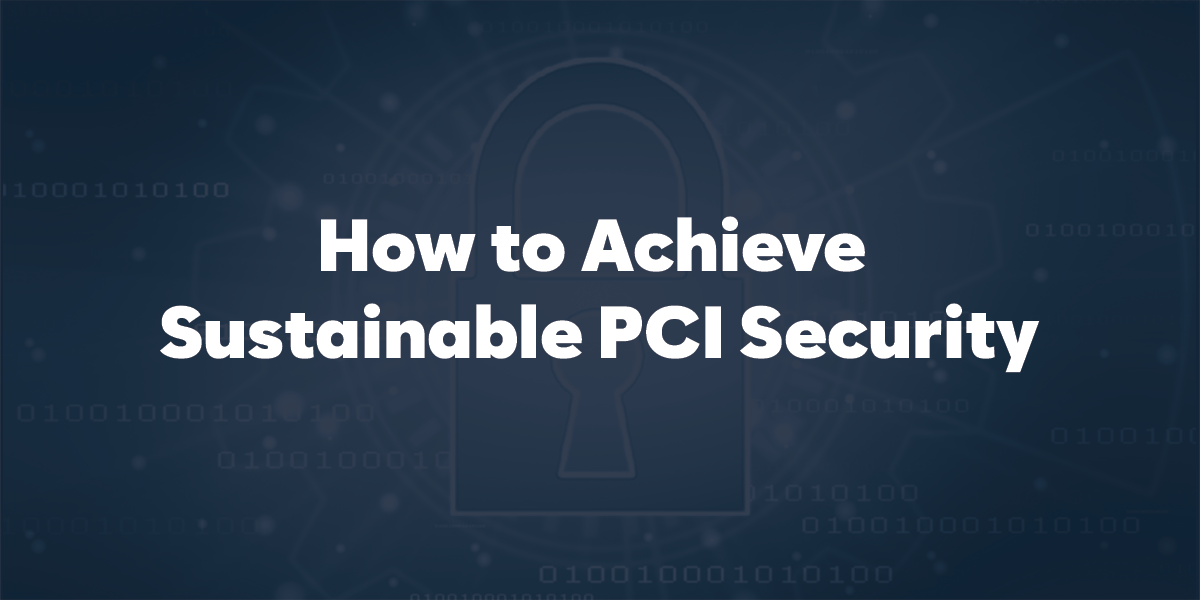In an age where digital transactions dominate the business landscape, the importance of safeguarding sensitive financial information cannot be overstated. Payment Card Industry Data Security Standard (PCI DSS) sets the benchmark for securing credit card transactions, ensuring that businesses handle customer data with the utmost care. Achieving sustainable PCI security is not just a regulatory requirement; it is a commitment to maintaining trust and protecting your customers.
In this blog post, we’ll explore key strategies to achieve and sustain PCI security effectively.
Understanding PCI DSS
Before delving into strategies, it’s crucial to have a solid grasp of what PCI DSS entails. PCI DSS is a set of security standards designed to ensure that all companies accepting, processing, storing, or transmitting credit card information maintain a secure environment. The standard encompasses a range of requirements, including network security, access management, and regular monitoring.
Conducting a Thorough Risk Assessment
Sustainable PCI security begins with a comprehensive risk assessment. Understand the flow of cardholder data within your organization, identify potential vulnerabilities, and assess the impact of a security breach. This evaluation sets the foundation for developing a robust security strategy tailored to your specific risks and needs.
Implementing Strong Access Controls
Unauthorized access is a significant threat to PCI security. Implementing strong access controls ensures that only authorized individuals have access to sensitive data. This involves restricting access based on job responsibilities, implementing strong authentication measures, and regularly reviewing and updating user access privileges.
Encrypting Cardholder Data
Encryption is a fundamental aspect of PCI DSS compliance. By encrypting cardholder data, even if unauthorized access occurs, the data remains unreadable and unusable. Employ strong encryption protocols to protect data both in transit and at rest. Regularly update encryption algorithms to stay ahead of emerging threats and vulnerabilities.
Regularly Updating and Patching Systems
Cyber threats are ever-evolving, and staying ahead requires constant vigilance. Regularly update and patch systems to address vulnerabilities and protect against known exploits. This includes not only the operating system but also applications, databases, and any other software that interacts with cardholder data. Automated patch management systems can streamline this process and ensure timely updates.
Implementing Firewalls and Intrusion Detection Systems
Firewalls act as a first line of defense against unauthorized access, while intrusion detection systems (IDS) monitor network and system activities for signs of malicious behaviour. Implementing robust firewalls and IDS is essential for protecting cardholder data. Regularly review and update firewall rules to adapt to changing threats and ensure continuous monitoring of network activities.
Conducting Regular Security Audits and Assessments
Regular security audits and assessments are critical for identifying weaknesses in your PCI security measures. Engage third-party security experts to conduct thorough assessments, penetration testing, and vulnerability scans. These exercises provide valuable insights into potential vulnerabilities and help you address them before they can be exploited.
Employee Training and Awareness Programs
Human error remains one of the leading causes of security breaches. Educate your employees about the importance of PCI compliance, the risks associated with mishandling cardholder data, and best practices for maintaining security. Implement ongoing training programs to keep employees informed about the latest security threats and reinforce a culture of security awareness.
Establishing an Incident Response Plan
Despite all preventive measures, security incidents may still occur. Having a well-defined incident response plan is crucial for minimizing the impact of a breach. Clearly outline the steps to be taken in the event of a security incident, including communication protocols, containment measures, and post-incident analysis.
Continuous Monitoring and Improvement
PCI security is not a one-time effort but an ongoing commitment. Establish a continuous monitoring system to detect and respond to security threats in real-time. Regularly review and update security policies and procedures based on the evolving threat landscape and industry best practices.
Conclusion
Achieving sustainable PCI security requires a multifaceted approach that goes beyond mere compliance. It demands a proactive commitment to understanding and mitigating risks, implementing robust security measures, and fostering a culture of security awareness. By following these strategies and staying abreast of the latest developments in cybersecurity, businesses can not only achieve PCI compliance but also ensure the long-term security of their payment card data and, more importantly, the trust of their customers.





